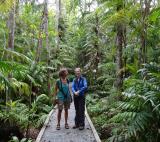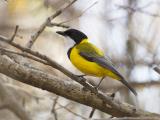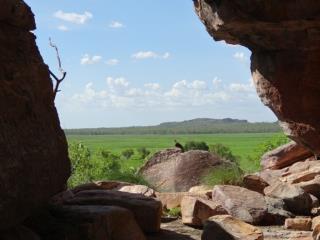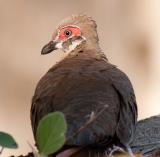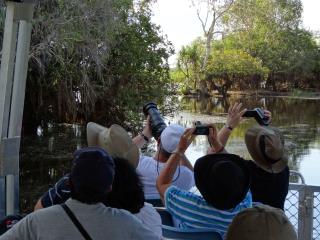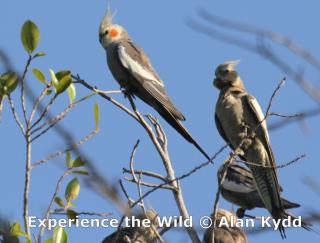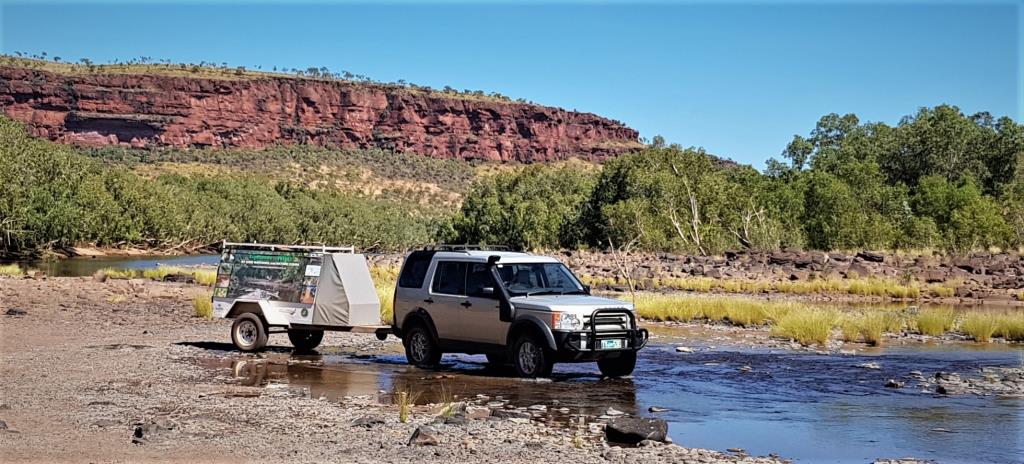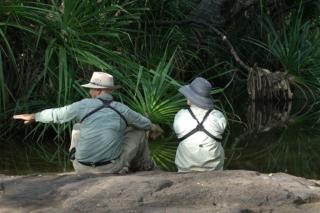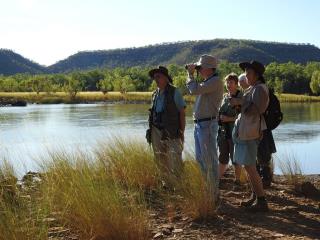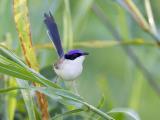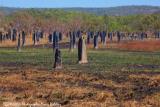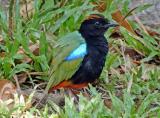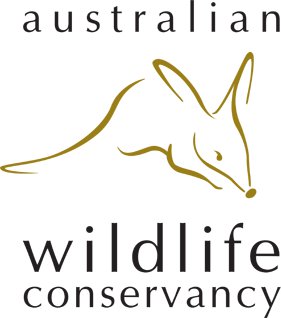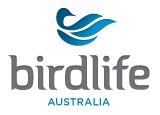Top End Birds and Wildlife
Ten day's birding around Darwin, Pine Creek, Timber Creek, Katherine, Kakadu and Mary River - Golden Gate Audubon Society - June 1-10, 2020
- Ten day, nine night tour starting with prime birding locations around Darwin's mangroves, monsoon forests and parklands, then Mary River National Park and the famous Kakadu National Park. We continue on through open savannah country to Pine Creek and Katherine. Then we follow the Victoria River through wide open plains and rugged escarpment ranges to Timber Creek. Then its back to the Pine Creek area and Darwin
- Key species - Gouldian Finch, Yellow-rumped and Pictorella Mannikins may be seen at various locations between Darwin and Timber Creek. Hooded Parrot, Northern Rosella, Red-winged Parrot, Cockatiel, Red-tailed Black Cockatoo, Buff-sided Robin, Partridge Pigeon, Purple-crowned Fairywren, Black-tailed Treecreeper and Sandstone Shrike-thrush. Red Goshawk, Black-breasted Buzzard. Kakadu escarpment endemics such as Chestnut-quilled Rock-pigeon, White-lined Honeyeater and Banded Fruit-dove.
- Will this tour suit me? With the added value of Ian’s expert guidance, Kakadu will yield even more of it’s secrets to enthusiastic nature lovers seeking a unique opportunity to encounter birds, reptiles, mammals, invertebrates and plants. In addition, the cultural heritage of Kakadu will feature strongly throughout this trip. All accommodation is in comfortable air-conditioned rooms with ensuites. We start before dawn and stop for a bush breakfast at beautiful locations surrounded by birdlife at its busiest. Lunch is enjoyed out in the field and dinners are ala carte menus at resorts or restaurants. Enjoy an after dinner slide presentation by Ian on subjects relative to the days exploration. Group is smallish with a maximum of only twelve guests, plus Ian and Mike.
- Cost - $4785 (AUD) per person twin share (single supplement $725)
Ian Morris: Ian Morris is a biologist, educator, conservationist and author of ‘Kakadu National Park’ and co-author of ‘A Natural History and Field Guide to Australia’s Top End’. He has worked with Aboriginal Traditional Owners of the Arnhem Land region for decades, and was involved in forming Kakadu National Park. Ian promotes the magic of the bush as an NT based environmental consultant for many national parks in Australia.
Ian Morris learnt his first Aboriginal language at the age of nine in East Arnhem Land, and eventually went back there as a school teacher. He mentored and continues to mentor many young indigenous children, and has himself been mentored by Aboriginal elders in the Indigenous understanding of relationships with nature. He has been involved with Kakadu National Park since it’s inception in the 70’s and has written and co-authored many books on the wildlife and ecology of the region. Ian has an understanding and rapport with animals (including Homo sapiens) like no other person I know.
Here is a transcript of an interview with Ian about Kakadu in 2005. Ian features in this episode of the ABC documentary 'Kakadu' see him from 19min on or enjoy the whole documentary and the other three Kakadu episodes (Episode 1, Episode 3, Episode 4). Warning: If you watch this you WILL want to come!!

Mike Jarvis has been a nature enthusiast from earliest memories. At sixteen he found a copy of Neville Cayey’s ‘What Bird is That?’ in a second hand bookshop and began his study of Australian birds. Having lived in Perth, Geraldton and Carnarvon on the west coast Mike was familiar with the flora and fauna in those areas. On visiting Darwin for the first time, Mike was amazed to find the bush alive with new sounds and unfamiliar trees, and took to the task of identifying them, building up a working knowledge of the bird species, their calls, and plants, mammals, reptiles and invertebrates. Mike and his wife Jenny are Wildcare volunteers and care for injured and orphaned wildlife, mainly birds and reptiles, and Mike has had training in handling dangerous wildlife (venomous snakes). With decades of research, observation and wildlife experiences behind him, he enjoys the privilege of sharing this with others by leading tours to wild places in Darwin and the Top End.
Itinerary
DAY 1 - DARWIN to MARY RIVER
Pick up from your Darwin accommodation - 6.30am

We start off with a bush breakfast at East Point, overlooking rocky shoreline with shorebirds while bushbirds come to a nearby leaky tap to drink.
After breakfast we walk through monsoon forest in search of the endemic Rainbow Pitta, Rose-crowned Fruit-Dove, Varied Triller and Brown Whistler.
We take the boardwalk that goes right through the mangroves to the mudflats, with a pleasant landing that allows us to sit, listen and observe while various waders, Red-headed Honeyeaters, Broad-billed Flycatchers, Torresian Kingfishers, and others come into sight. After visiting some savannah woodland habitat for Forest Kingfisher, Double-barred and Long-tailed Finch, Red-tailed Black Cockatoo, Spangled Drongo and others, and then we head out to the wetlands of Fogg Dam Conservation Reserve.
The 60 kilometre drive out to Fogg Dam gives us the opportunity to spot various raptors, kingfishers and the Blue-winged Kookaburra, as well as see a blend of savannah woodland and paperbark forest habitats. At Fogg Dam, the Pandanus lookout is a great place to eat our picnic lunch overlooking the floodplain. The spotting scope is set up and we pick out Magpie Geese, Intermediate Egret, Little Egret, Great Egret, Cattle Egret, Pied Heron, Royal Spoonbill, Little Black Cormorant, White-browed Crake, Black-necked Stork and sometimes Brolga from here. Whistling Kites and often a White-bellied Sea-eagle soar overhead. Crimson Finch, Rufous-banded Honeyeater, Lemon-bellied Flyrobin, Rose-crowned Fruit-Dove, Forest Kingfisher, Sacred Kingfisher and Paperbark Flycatcher are some of the species that occupy the bush on the edge of the floodplain and are often seen in the carpark area. Estuarine Crocodiles, Gilberts Dragon’s, Yellow-spotted Monitors, Northern Long-necked Turtles and Common Tree Snakes may be seen here.
Then we explore the Waterlilies walk which takes us along the fringe of wetland, through paperbark forest. We often see Rainbow Pitta, Brown Whistler, Arafura Fantail and Shining Flycatcher.
We stop at Adelaide River Bridge and search for Mangrove Golden Whistler then continue on to the Mary River Wilderness Retreat and compare notes on sightings for the day. Listen for Bush Stone-curlew, Tawny Frogmouth and Barking Owl at night.
Distance covered for the day - 150 kilometres.
Dinner and accommodation is in a comfortable, air-conditioned Bush Bungalow at Mary River Wilderness Retreat.
DAY 2 - EXPLORE MARY RIVER NATIONAL PARK
We travel along the historic Stuart Point Road to Shady Camp, exploring wetlands and pockets of monsoon forest along the way. Australian Bustard is often seen on the floodplain here.
Distance covered for the day - 180 kilometres.
Return to Mary River Wilderness Retreat.
DAY 3 - MARY RIVER to KAKADU
We leave early for Kakadu National Park, stopping at the Mamukala bird hide. We have a bush breakfast and then do the four kilometre loop walk. Then we visit the hide.
After a picnic lunch at Ubirr, we explore the Manngarre Monsoon Forest walk, Cahill’s Crossing and Bardedjilidji Sandstone Escarpment walks, searching out some Kakadu escarpment endemics such as Chestnut-quilled Rock-pigeon and White-lined Honeyeater. Other species on our target list today are Partridge Pigeon, Rainbow Pitta, Shining Flycatcher, Northern Fantail, Arafura Fantail, Black and Little Red Flying Fox and Wilkin's Rock Wallaby. We take in some spectacular ancient rock art and a magnificent view across the Nadab Floodplain.
At Cahill’s Crossing we may see large Estuarine Crocodile's gathering and positioning themselves to catch barramundi as small bait fish swarm upstream with the incoming tide.
We leave Ubirr and head to our accommodation at Jabiru.
Distance covered for the day - 230 kilometres.
Dinner and bird call at the resort and possibly some nearby nightspotting for nocturnal species. Accommodation at Kakadu Lodge, Jabiru

DAY 4 - EXPLORE KAKADU
Early morning bush breakfast at Anbangbang Billabong. Then we do the 2.5 kilometre circuit walk at Burrunggui rock. Here there is more ancient Aboriginal rock art, and more endemic species such as Banded Fruit-dove, Sandstone Shrike-thrush, Sandstone Helmeted Friarbird and Black Wallaroo. Other species we will look for include Emerald Dove, Northern Rosella, Partridge Pigeon and Spangled Drongo.
We have a picnic lunch at Gubara and then walk to Gubara pools.
Distance covered for the day - 100 kilometres.
Dinner and bird call at Kakadu Lodge. Accommodation at Jabiru
DAY 5 - EXPLORE KAKADU
Early morning bush breakfast at Muirella Park. Then we do the 3.5 kilometre circuit walk though wetland habitats.
We have a picnic lunch at Mardagul, near Cooinda. We do the short Mardagul Billabong walk and then visit the Warradjan Cultural Centre which offers an amazing insight into local Aboriginal culture and history. There is also a well stocked cultural and natural history bookstore and authentic souvenir shop.
At 4.10pm we depart for the famous Yellow Waters cruise. From the comfort and safety of an open sided, covered vessel we are likely to see our four species of Egret - Great, Intermediate, Little and Cattle as well as Black-necked Stork, Brolga, Radjah Shelduck, Wandering and Plumed Whistling-ducks, Green Pygmy-goose, Pied Heron, Nankeen Night-heron,
Comb-crested Jacana, Royal Spoonbill, Azure Kingfisher, Little Kingfisher, Buff-sided Robin as well as many large Estuarine Crocodiles. What is particularly amazing about this cruise, is that, because it runs four times a day, every day of the year, the birds and crocodiles are so accustomed to it that they continue on in their natural behaviour completely undisturbed by the presence of the boat.We pause on sunset and take a few minutes to absorb the splendour of the location as the sun dips below the horizon, often with hundreds of birds flying overhead to their night roosts.
Distance covered for the day - 100 kilometres.
Dinner and bird call at Gagadju Lodge. Accommodation at Cooinda
DAY 6 - KAKADU to PINE CREEK
We meet the boat at the dock for our sunrise Yellow Water cruise, departure is 6.45am. After the cruise we have a buffet breakfast at Cooinda Lodge.
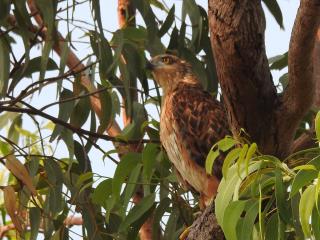
After breakfast we explore some more areas of southern Kakadu on the way out. The country changes and so do the bird sighting possibilities. We look out for Australian Bustard in flat open plains. We visit Gunlom and search for more endemic species while enjoying magnicent scenery and perhaps even a swim in the natural infinity pool above the falls. We explore an area where a pair of Red Goshawks have recently bred and stop at another location where Silver-backed Butcherbirds are reliable and then continue on to Pine Creek.
We explore the very birdy town of Pine Creek, which often has Hooded Parrots, Red-winged Parrots, Grey-crowned Babblers, Great Bowerbirds (and active bowers) and many other species, coming in to drink at sprinklers in the town and roosting in trees and on powerlines.
Distance covered for the day - 240 kilometres.
Dinner, bird call and accommodation at Pine Creek.
DAY 7 - PINE CREEK to VICTORIA RIVER ROADHOUSE - breakfast with Gouldian Finches!
We check out early from our accommodation at Pine Creek and head down to a waterhole on the Fergusson River. Here we enjoy a bush breakfast while watching birds coming to drink from a creek. Here there are some reliable areas for Gouldian Finch and Hooded Parrot! Other target species here are Banded Honeyeater, Bar-breasted Honeyeater, Rufous-throated Honeyeater, Cockatiel, Red-winged Parrot, Varied Lorikeet, Great Bowerbird, Grey-crowned Babbler and sometimes Budgerigar.
We then head south, bird around the Katherine township and have a picnic lunch at Nitmiluk National Park. Great Bowerbirds, Blue-winged Kookaburras and
Apostlebirds are regulars at the picnic spot.We continue on to Victoria River Roadhouse, stopping to bird at some locations along the way. Near the Victoria River Roadhouse we explore the river's edge for Yellow-rumped Mannikin and Purple-crowned Fairy-wren.
Distance covered for the day - 290 kilometres.
Dinner, birdcall and accommodation at Victoria River Roadhouse.
DAY 8 - VICTORIA RIVER ROADHOUSE to TIMBER CREEK - real outback country!
We have a bush breakfast at a waterhole on Buchanan Highway where we may see flocks of Cockatiels, Galahs, Budgerigars, Gouldian Finches, Pictorella Mannikins and many other more dry country species.
We continue west where the habitat changes dramatically as we travel through magnificent escarpment country, trees here include the amazing Boab and Nutwood. Raptors including Wedge-tailed Eagle, Black-breasted Buzzard, Spotted Harrier and Square-tailed Kite are sometimes seen here. There are records of the rare Grey Falcon in the area too.
There are many waterholes in otherwise dry creek beds that make this time of the year so productive for bird watching. We leave Victoria Highway and travel down some of the tracks that take us to some great little birding spots in beautiful rugged settings. Star, Zebra and Crimson Finches, and Red-browed Pardalote are among the targets here.
We explore some areas close to Timber Creek in search of finches and the Purple-crowned Fairywren. Gouldian and Star Finches, Pictorella and Yellow-rumped Mannikins, Purple-crowned Fairy-wrens, Spinifex Pigeon, Diamond Dove, Yellow-tinted and Black-chinned Honeyeaters are among the species we may see here. After exploring these areas we head back to Victoria River Roadhouse for the night.Distance covered for the day - 200 kilometres.
Bird call and dinner at the escarpment lookout and accommodation at Victoria River Roadhouse.
DAY 9 - VICTORIA RIVER ROADHOUSE to KATHERINE
We leave Victoria River Roadhouse early, have a bush breakfast in another secluded, bird rich location, and continue on to explore the Cutta Cutta Caves near Katherine. We join the 3pm Nit Nit Dreaming Two Gorge Cruise at Nitmiluk National Park.
Dinner and accommodation at Katherine. Distance 260km
DAY 10 - KATHERINE to DARWIN
Bush breakfast by a bird rich waterhole near Edith Falls.
We enter Litchfield National Park, visiting and stop to view some magnificent waterfalls and the wildlife in the area. Here we may find Dingo, Short-eared Rock Wallaby, Olive Python, Merton’s Water Monitor, Spangled Drongo, Blue-winged Kookaburra, Great Bowerbird, Pheasant Coucal, Pied Butcherbird and Silver-backed Butcherbird. This is also one of the few locations where the amazing magnetic termite mounds are found.
We head back to Darwin now via the back route which takes over the beautiful Finniss River. Both Estuarine and Johnston’s Crocodiles are present here. If there is time we will expore birding hotspots around Darwin.
We have our last dinner together and review of highlights for the day and the trip.
Drop off at Darwin accommodation.
Please Note:
Inclusions - Nine night's accommodation is all in comfortable air-conditioned rooms. Cold water, tea and coffee and refreshments available at all times. Meals are bush breakfast - choice of cereals, fresh fruit, yogurt, milk; lunch - salads with tinned fish or meat and breads; dinner - ala carte at restaurants.

Exclusions - Pre and post tour accommodation, beverages with dinner, purchases of a personal nature such as souvenirs, etc.
Group tour - $4785 per person twin share, single supplement $725 (All prices AUD)
Booking Procedure - You can book directly using our secure online booking site by clicking here. Payment options are Visa, Mastercard, Paypal or Bank Transfer. A 20% deposit secures the booking, the balance is due 30 days prior to start of tour. Please feel free to contact us if you have any queries regarding the tour.
Click Here to Check Availability and Book This Tour Now!
Further Information - Visit our FAQ page to learn more about how our tours run. Visit our 'Darwin Accommodation' links page to find some helpful suggestions for pre and post tour arrangements. Our Terms and Conditions document outlines our cancellation and refund policy. Email enquiries@experiencethewild.com.au or ring Jenny or Mike on 0400 404 058




